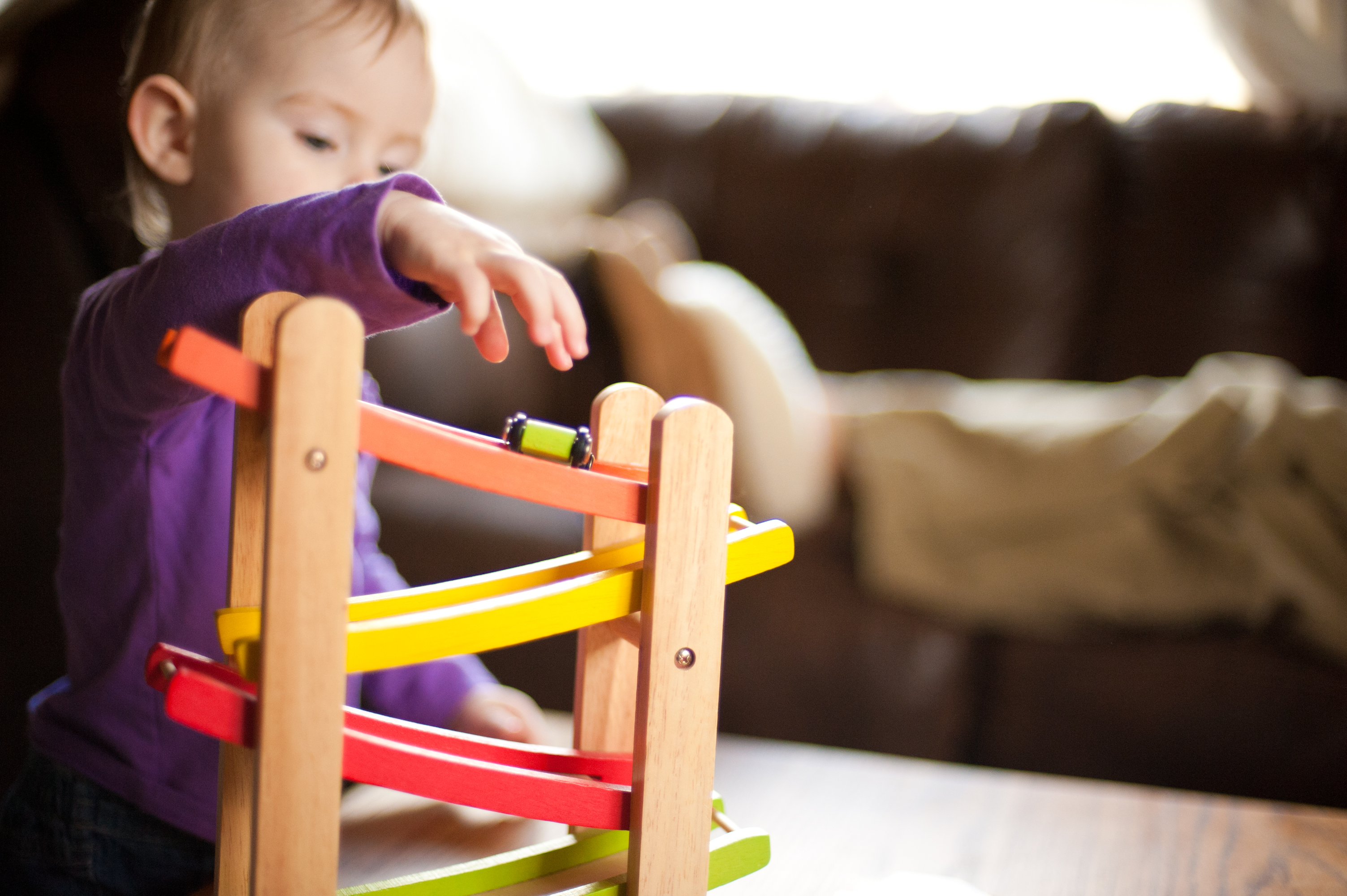This week at our Montessori inspired home based preschool something truly magical happened. Two year olds began sharing easily and generously without being forced, coerced, bribed, or scolded. I’ve never seen anything like it before.
A couple of weeks ago there were a lot of tears as the children grabbed toys from one another, wrenched them out of each other’s grasp, hoarded and hid the coveted toys, and when they were recovered by the other party, a whole new set of tears ensued.
I enjoyed this humorous description I recently read online about how toddlers feel about possessions. This has circulated the internet so I’m not sure who originally wrote it, but here you go:
1. If I like it, it’s mine.
2. If it’s in my hand, it’s mine.
3. If I can take it from you, it’s mine.
4. If I had it a little while ago, it’s mine.
5. If it’s mine, it must never appear to be yours in any way.
6. If I’m doing or building something, all the pieces are mine.
7. If it looks just like mine, it is mine.
8. If I saw it first, it’s mine.
9. If you are playing with something and you put it down, it automatically becomes mine.
10. If it’s broken, it’s yours!
The thing is, toddlers are just learning about possession and they feel excited about owning and possessing things. All too often I see frazzled parents running after their toddlers saying things like, “No Colin, that’s not yours, that’s his toy! Colin, give that back right now. You can’t take toys from other people.” And usually the scene ends with the parent snatching the toy away from their child to return it to its rightful owner.
I was guilty of doing the very same thing and wrote about it several months ago. But I made a commitment to stop grabbing things away from my daughter, and lo and behold, she stopped grabbing things from others! At least that was the case until school started.
I knew I had to come up with a plan and fast. In the Montessori classroom we take great care to honor and respect each other’s work. We try our best not to bother, mess up, or interfere in someone else’s activity unless we ask to join them and they agree to share their work.
Often, children will choose to work together, but sometimes they just need their own space and they need to know that no one will invade their space and grab their stuff away. And since children can only learn when they’re feeling safe, secure, and relaxed, the best way to support those emotions in the classroom is to implement a clear boundary and rule that we don’t take someone else’s work.
So, while I’ve done pretty well at stopping the children from invading each other’s workspace, they will often choose to work together and then they need to share effectively. If one child wants the part of the train track that the other is holding, we need an effective way to communicate that without grabbing.
This week I decided to try something new. Rather than protecting the child who possesses the coveted item, I focused on the child who wanted it. “Julia, if you want the truck you may ask for a turn.” She immediately shot off, “May I please have a turn with the truck?” But Fred was not feeling generous and responded with a sharp “No!”
OK, so that didn’t work so well, but I noticed something. Julia was heading toward Fred with her hand out and her palm down and it looked like she was about to grab the truck from him. He pulled back to protect the truck from her and then inspiration struck me.
I invited Julia to ask again, but this time to approach Fred with her hand out and her palm up. And that’s when the magic happened. Fred handed Julia the truck immediately! I was shocked. I hadn’t forced or coerced him. I didn’t even ask him to share. All I did was coach my daughter to ask in a way that invited sharing and voila! Sharing happened naturally.
Since Fred isn’t talking quite as much as Julia yet, we’ve shortened his request to “Turn please?” with the open outstretched hand. Now the two of them are practicing and as I continue to watch there are several things I’m noticing about toddlers sharing effectively. First, when they feel forced, they resist and withhold. Second, when they’re asked nicely with an open hand, they almost seem compelled to offer the toy to the outstretched hand of their friend. Just about every time, there’s at least some sharing happening when we use this technique!
So, what do you think? Will you try this with your kids? What else have you tried that has encouraged sharing? I can’t wait to hear some other strategies that have worked!
Have a fantastic week, Shelly



2 Replies to “How to Teach Toddlers to Share”